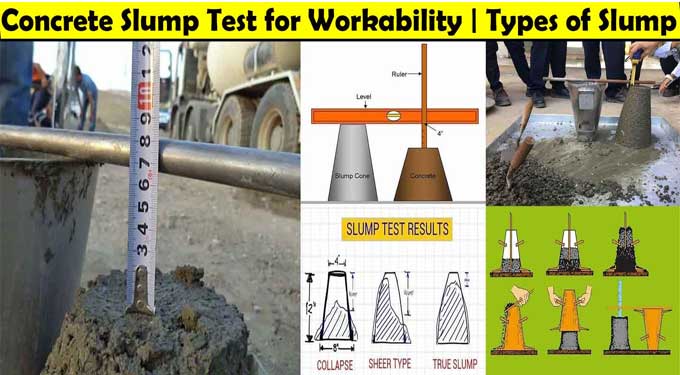
Techniques of Concrete Slump Test

The Concrete Slump Test is a method of determining the workability or fluidity of concrete. It is a method of determining the consistency or stiffness of concrete. The Slump test is a method for determining concrete consistency.
The amount of water used in the mix is indicated by the consistency or stiffness. The stiffness of the concrete mix should be matched with the expected product quality. The slump test is the most simple and basic concrete workability test, with cheap costs and rapid results. It has been commonly utilized as a concrete workability test since 1922.
The Concrete Slump test is used to determine the property of freshly laid concrete. The test is an empirical evaluation of fresh concrete's workability. It does so by comparing the consistency of batches of concrete. The Slump test is popular due to; the ease with which the device is utilized and the procedure is followed.
Principles related to Concrete Slump Test
The Concrete Slump Value is based on the principle of gravity on the surface of the concrete cones. That determines the percentage of water present in the concrete mixture. The percentage of water in the concrete mixture also determines the concrete?s stiffness and workability.
Factors influencing the Concrete Slump Test
1. Cementitious materials have features such as chemistry, fineness, particle size distribution, moisture content, and temperature. Aggregate size, texture, combined grading, cleanliness, and moisture content.
2. Dosage, kind, combination, interaction, adding sequence, and effectiveness of chemical admixtures.
3. Air containment in concrete mixtures.
4. Techniques of concrete batching, mixing, and transporting.
5. Concrete?s Temperature.
6. Slump Testing methods, Concrete Sampling, and test equipment conditions.
7. Presence of excess water in the concrete.
Techniques of Concrete Slump test
1. The Concrete Slump test mold is a frustum of a cone with a height of 300 mm (12 inches). The base measures 200 mm (8 inches) in diameter, with a 100 mm (4 inches) aperture at the top.
2. The Base of the frustum cone is placed on the smooth surface and the container is filled with a concrete mixture, whose workability is to be judged.
3. A normal 16 mm diameter steel rod, rounded at the end, is used to heat each layer 25 times.
4. For screening and rolling the temping rod once the mold is entirely filled with concrete, the top surface is struck off (leveled with the mold top opening).
5. During the entire operation, the mold must be firmly held on its base so that it does not move owing to the movement caused by the concrete pouring. This can be accomplished using handles or a foot-rest brazed to the mold.
6. The cone is gently and carefully lifted vertically when the filling is complete and the concrete is leveled; an unsupported concrete will now sink.
7. A slump is defined as a decrease in the height of the center of slumped concrete.
8. The Slump is measured by placing the cone next to the slumped concrete and then placing the temping rod above the cone so that it passes through the slumped concrete area.
9. With scale, the difference in height between the concrete and the mold is shown.
Precautions before the Slump test
To reduce the impact of variations in surface friction on a slump, the inside of the mold and its base should be moistened at the beginning of each test.
To learn more, watch the following video tutorial.
Video Source: UltraTech Cement
The area immediately surrounding the base of the cone should be cleaned of any concrete that may have fallen accidentally before removing the mold.


